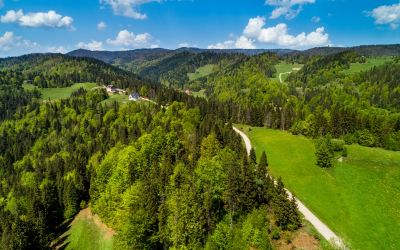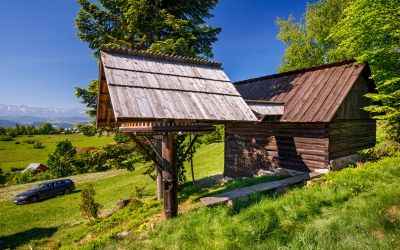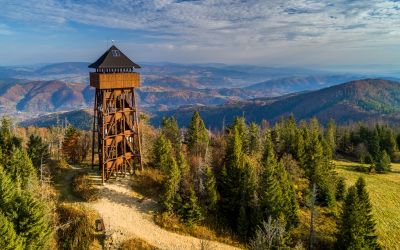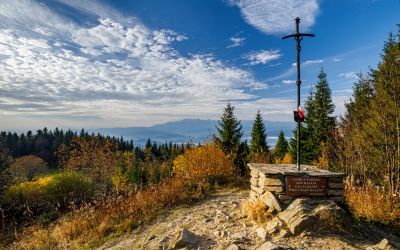In the footsteps of Wołochów around Lesser Poland
We invite you to wander in the footsteps of Wołochów ... 15 thematic routes leading through Lesser Poland, which together form a holistic, cross-sectional image of the shepherd's legacy, for which mountain areas are the background - a context that thanks to the trails gains additional, non-material value.

Czas przejścia:
7:00
Odległość:
23,2
Poziom trudności:
2
Tematyka:
przyroda
Opis produktu
Knurowska Pass - Studzionki Tourist Station 2.9 km (1:00 h) - Pod Kotelnica 1.7 km (0:30 h) - Runek 2.6 km (1:00 h) - Kudów Glade 2.9 km (0 : 50 h) - Jaworzyna Ochotnickie 1.5 km (0:30 h) - Tent base Lubań 1.9 km (0:40 h) - Krościenko 9.7 km (2:30 h)
The route is recommended for: individual tourists, groups, families with children
The Beskidy landscape was shaped by centuries-old activity of people - shepherds who came from afar, who tamed the wild, mountainous space with the work of their own hands. Clearing forests and burning them allowed to prepare new areas for sheep grazing. The pastoral economy of several hundred years, in turn, contributed to the creation of glade glades, where many unique and rare species of alpine plants can be found. With time, sheep appeared less and less in the halls, and the forest began to claim its ...
The process of degradation of forest glades, valuable in terms of nature and landscape, is called secondary succession. Fertile meadows, where grazing is no longer continued, disappear irretrievably, overgrown by expansive species of grasses and shrubs, such as the twin grass weed, commonly known as the "nursery", blueberry or raspberry. The final stage of succession is the development of spruce youngsters, who over several decades master the glade that is not in use. Fallow meadows enter trees, obscuring the views of the mountains and valleys.
One of the most interesting plants that can still be found in the Gorce glades is the orchid - a plant that has evolved great adaptability to insecticide. The peculiarity of orchids is not only the bright coloration, attracting butterflies and bees, but also seeds. They belong to one of the smallest in the world, and a slightly "too large" shell allows them to glide easily, carried by the wind. Orchid development - from seed to first flowering - however, lasts a very long time (3-6 years). The disappearance of environments in which orchids have a chance to grow, threatens their extinction, which is why all species of this genus occurring in Poland are strictly protected.
Route:
The walking route leads through the entire Lubań range. From the Knurowska Pass, where the hike begins, to Krościenko, where the hike ends, follow the red trail - the Main Beskids Trail.
The so-called Knurowska Pass runs through Knurowska Road, one of the most beautiful scenic roads in Poland. From here, we head east to reach Studzionki, the hamlet of Ochotnica Górna after about 1:00 h, where a small private ethnographic chamber and tourist station operate. The further route leads along the ridge - numerous glades along the way, which are the remains of former pastoralism. Most of them today are gradually growing on trees.
At a distance of about 3:30 h walking from Studzionki, we climb to the peak of Lubań, famous for its vast panoramas. You can admire them from 2015 thanks to the lookout tower. According to legends, Lubań is a cursed and magical place - this is where the local sorcerers had to fight with each other. Folk accounts say that after one of the shepherd-wizards uttered a terrible curse, a whole herd of sheep and juhas sank to the ground. The sound of zbyrcoków - bells of sheep - can be heard on St. James (July 25).
We descend from Lubań towards the Lubań tent base, open in the summer season, and then we head towards Krościenko, which we reach after about 2:30 h walk.
Dodatkowe informacje
Tourist and cultural events in the area:
- "Weekend with GPN", May, Gorce National Park.
- Watra Ochotnicka, August, Village Culture Center in Ochotnica Górna.
- Autumn redyk in Ochotnica, September, Village Culture Center in Ochotnica Górna.


















